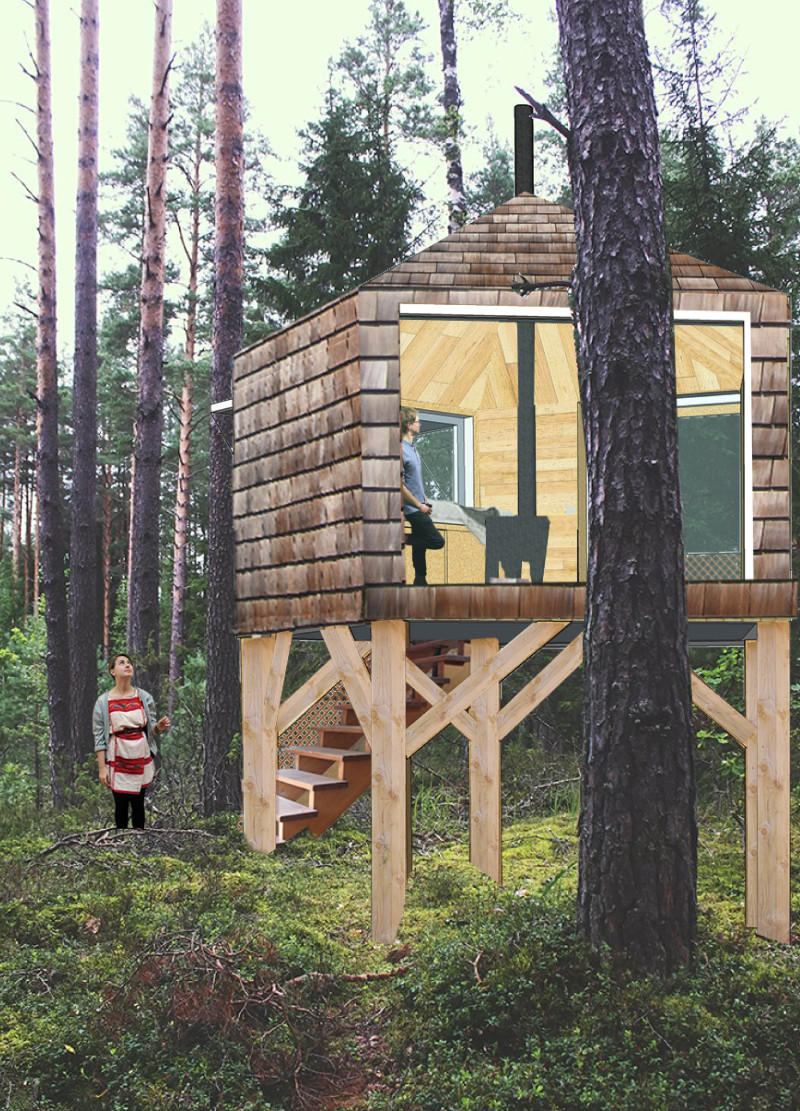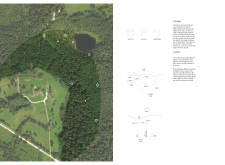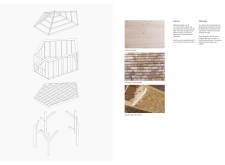5 key facts about this project
Functionally, the project serves as a retreat that encourages meditation, self-reflection, and relaxation. Each cabin is conceived as a space where users can find solace and engage in personal growth. The layout is designed to facilitate various aspects of the retreat experience, combining areas for individual contemplation with communal spaces that encourage social interaction among visitors. This balance between solitude and community is pivotal, catering to diverse user needs and enhancing the overall experience of the retreat.
Key elements of the project include the spatial configuration of the cabins, which are thoughtfully placed throughout the landscape to maximize the benefits of their natural surroundings. The design recognizes the importance of user diversity; cabins are categorized to suit different personalities, providing tailored environments for both introverted and extroverted visitors. This approach not only personalizes the experience but also promotes a sense of belonging within the broader community context of the retreat.
Materials play a significant role in the overall architectural vision. The use of solid wood panels for walls contributes to a warm and inviting atmosphere, while unfinished wooden shingles used for roofing create a harmonious blend with the forest. The incorporation of natural hempcrete for insulation highlights a commitment to sustainability, ensuring that the buildings are energy-efficient while respecting local ecological practices. This choice of materials establishes a direct connection to the environment, enhancing the cabins' integration into the landscape.
The interiors are designed with a minimalist ethos, prioritizing functionality and comfort. Flexible spaces are enhanced with multifunctional furniture that adapts to various activities throughout the day, from meditation to meal preparation. Large windows provide ample natural light and frame breathtaking views of the forest, reinforcing the cabin's connection to the natural world while enhancing the user’s experience of the surrounding landscape.
Another distinctive aspect of the project is the deliberate organization of outdoor and communal spaces. Paths thoughtfully connect the cabins to shared facilities, such as toilets and communal kitchens, ensuring that visitors have easy access to essential amenities while maintaining a sense of privacy in their personal retreats. This practical organization fosters a sense of community among retreat participants without compromising their individual experiences.
One of the most unique design approaches in "Balance in the Woods" lies in its holistic vision of architecture as a facilitator of mental well-being. By acknowledging the mental health benefits of nature and incorporating elements that promote tranquility and introspection, the design moves beyond functional architecture to become a restorative experience.
For those interested in a deeper understanding of "Balance in the Woods," exploring the project presentation is highly recommended. Engaging with the architectural plans, sections, and detailed designs will provide valuable insights into the innovative architectural ideas that shape this inspiring project. The thoughtful approach taken in its design reflects a growing trend in contemporary architecture to prioritize user experience and environmental considerations in creating meaningful spaces.


























